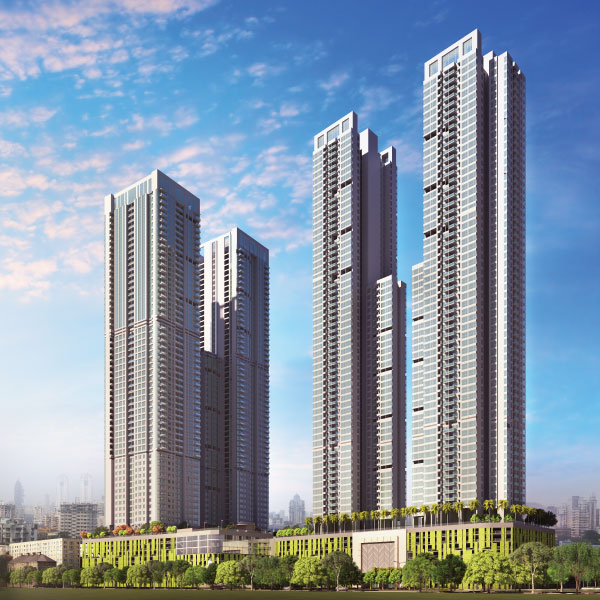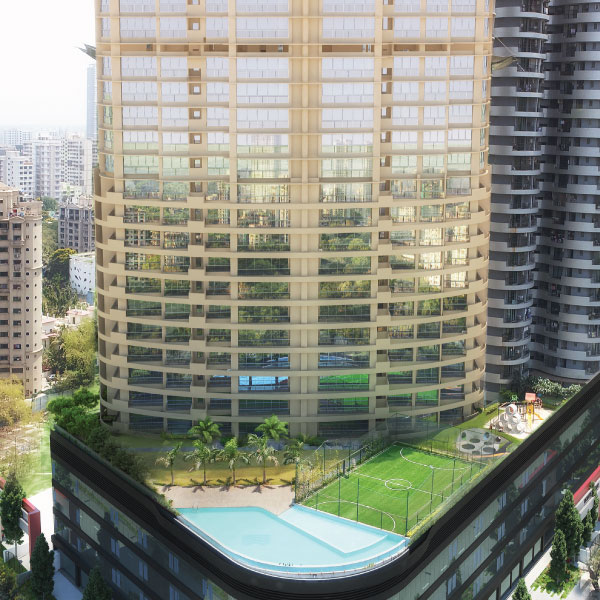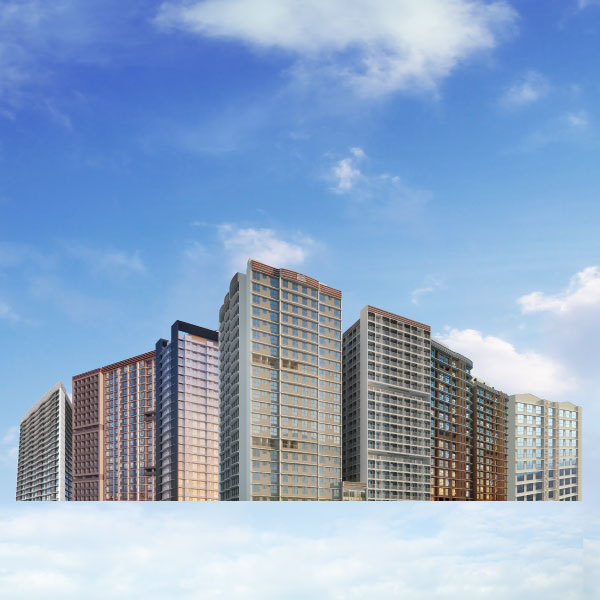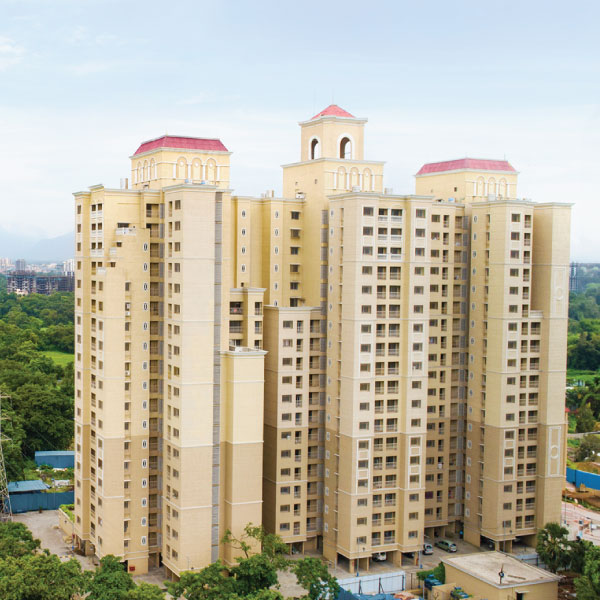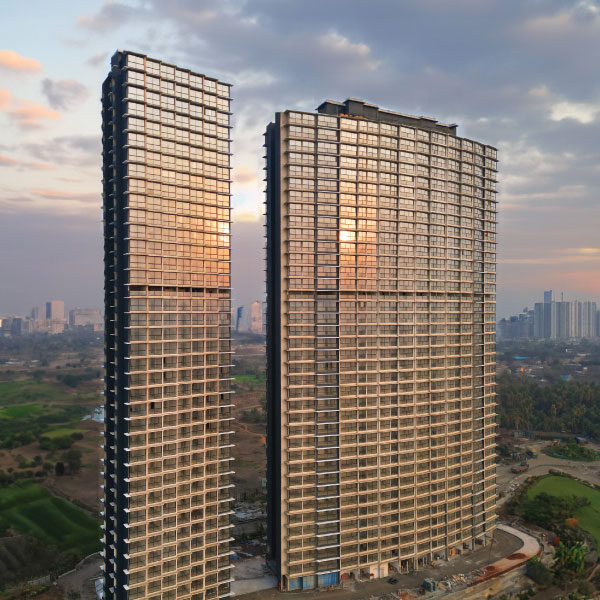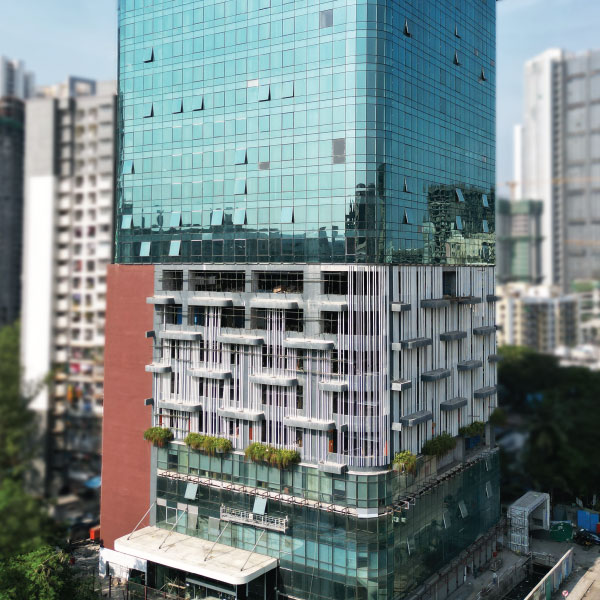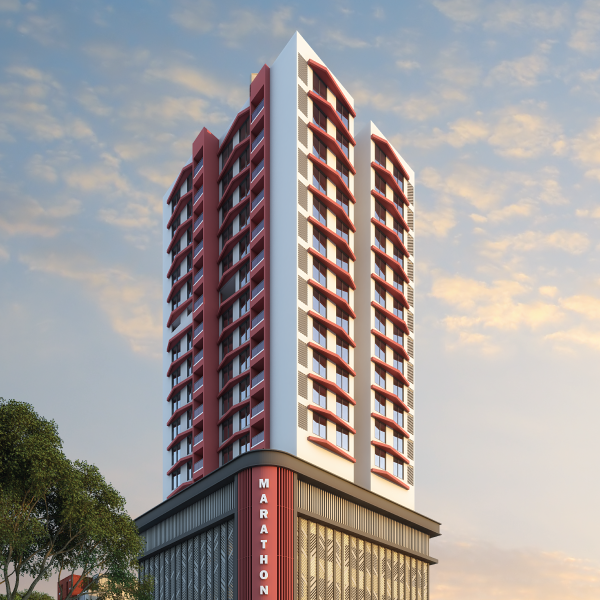5 things to check when you’re buying a flat
Last Updated on, November 1st, 2022

5 things to check when you’re buying a flat
So you’ve decided to buy a home from a builder – you’ve set a budget, identified the location and shortlisted some projects – now what? Buying a home is a major life decision. Here are 5 tips for you to navigate the complex task of buying a flat.
Check the track record of the developer and project detail
Check the track record of the developer in the specific project and in other projects.
1. Check the RERA details of the project. Check this video to know how.
2. For more information, refer to our guide on How to check RERA details.
3. Read reviews and forums
4. Check with a couple of brokers. However, do your independent research as well since brokers may be incentivised to sell in particular projects and may push you towards those.
Check what fits your requirement the best at a macro level
Here are some critical things you should be thinking about:
Access and connectivity
Think about how you will travel to work. If it is by road, check how the road connectivity is. Do a test drive from the project to your workplace during peak hours and measure the time taken. If it is by train check how long it takes to reach the station and whether transportation is easily available to and from the station. Check if upcoming infrastructure projects will improve connectivity for the project.
Social infrastructure
Imagine you were living in the development. Think about where your children will go to school or where they can go to play, where you will go shopping or to watch films, where you can buy your groceries from, where the nearest hospitals and banks are. Speak to a few people in the neighbourhood if you’re not familiar with the area.
Possession date
Think about when you would like to receive possession of the apartment. Under-construction property may be cheaper than ready to move in property and will also enable you to just pay pre-EMI while the project is under-construction instead of the full EMI. If you’re staying on rent, take into consideration whether you can comfortably service your pre-EMI and your rent while the property is under construction.
At a micro level evaluate the floor plans thoroughly and critically
Natural light and ventilation are key aspects you should evaluate. Sunlight has a big impact on your moods, health and happiness, so make sure your home gets plenty of natural light. Various factors impact how much light and ventilation your home gets including the layout and orientation of the project and the apartment and the window sizes.
Start at the layout level
Evaluate the masterplan of the development first. Here are some questions you can ask
1. Is the density too much – a lot of developments are like urban jungles and the view from your apartment will only be other buildings. If the buildings are too close together, this can feel claustrophobic.
2. What is the shape of the buildings? A lot of developments have ‘plus’ shaped buildings as shown in the diagram below. This narrows the viewing angle and your view gets blocked by your own building.
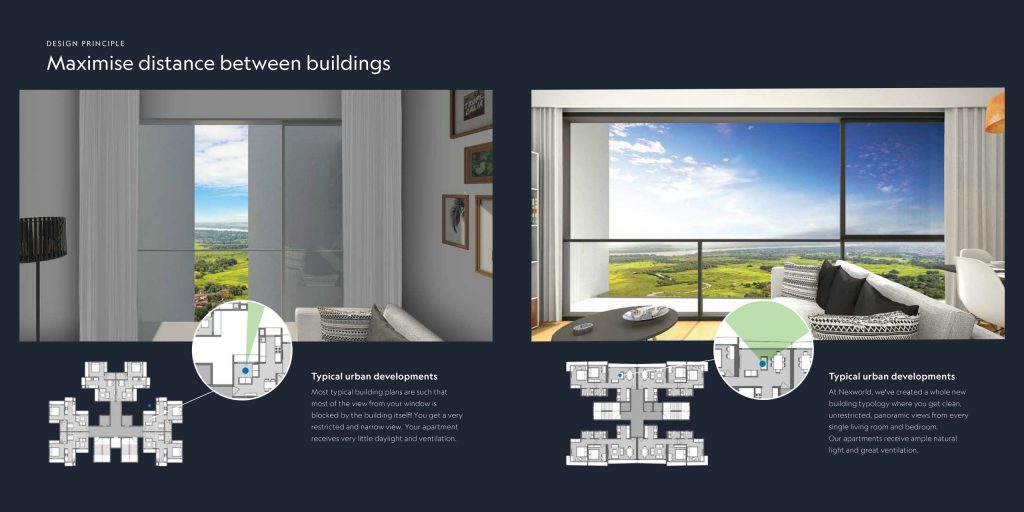
RERA carpet area can be confusing – be careful
1. According to the RERA, carpet area is defined as ‘the net usable floor area of an apartment, excluding the area covered by the external walls, areas under services shafts, exclusive balcony or verandah area and exclusive open terrace area, but includes the area covered by the internal partition walls of the apartment.
2. RERA carpet area is a useful measure for clients but may differ from the useable carpet area of an apartment because it includes interior walls of the apartment and also excludes certain areas like enclosed balconies, terraces and some other useable areas
3. Useable carpet area is a measure that excludes walls and includes all the areas where you can spread a ‘carpet’.
4. The below diagrams illustrate the difference between useable and RERA carpet area.
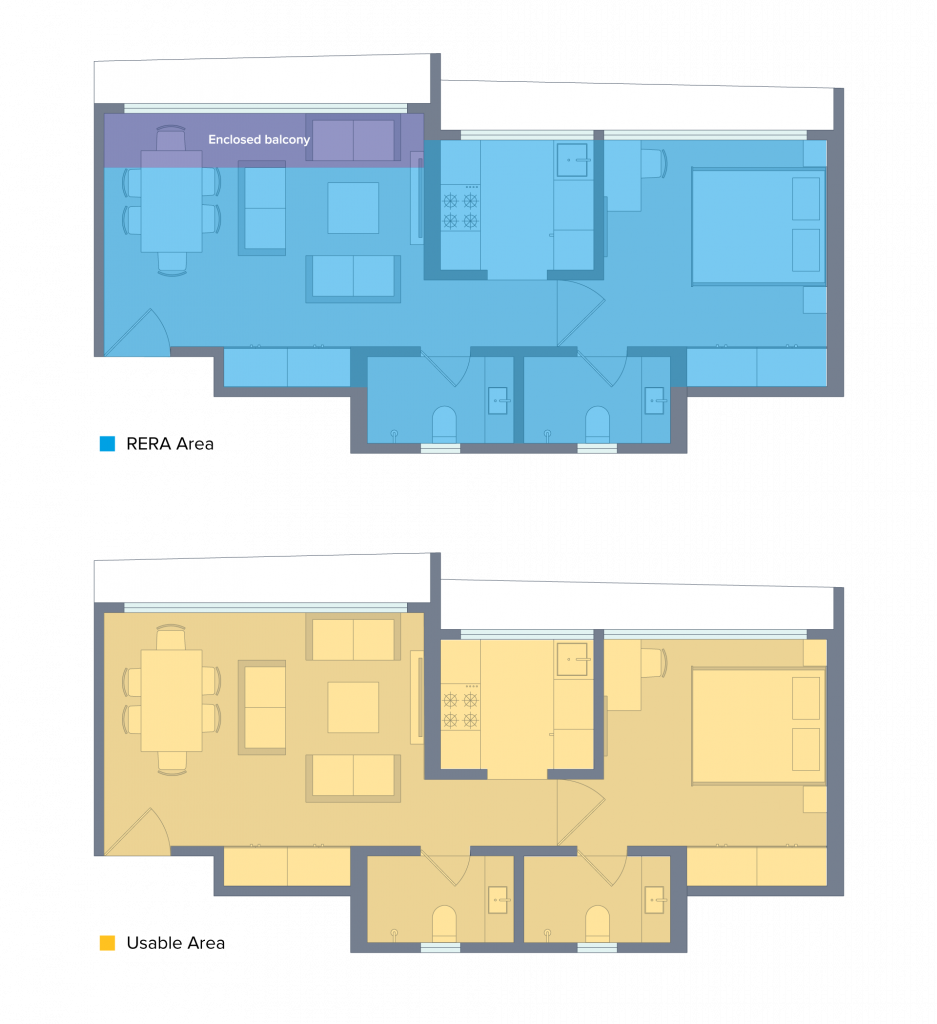
5. For example, enclosed balcony is a technical term used in approvals. An enclosed balcony is actually a part of your room and is useable but is declared as a balcony that has been ‘enclosed’ in approvals for FSI concessions – this is perfectly valid and legal, however under the definition of RERA carpet area, this area is excluded even though it is a part of your useable carpet area.
6. The useable area is a more useful measure for you as a customer. While comparing projects, always check the useable carpet area.
Evaluate plans from a user perspective
Don’t just compare carpet areas, similar apartment sizes can have vastly different layouts. Imagine how you would furnish the apartment if you stayed in it. Remember to keep the needs of all members, including house help in mind while designing.
– Can you fit your furniture the way you would like it?
– Are there passages cutting across spaces making it unusable. For example check the below two diagrams – both rooms have the same dimensions but just a different placement of door, this creates an invisible passage that cuts across the space dividing it into odd-sized spaces.
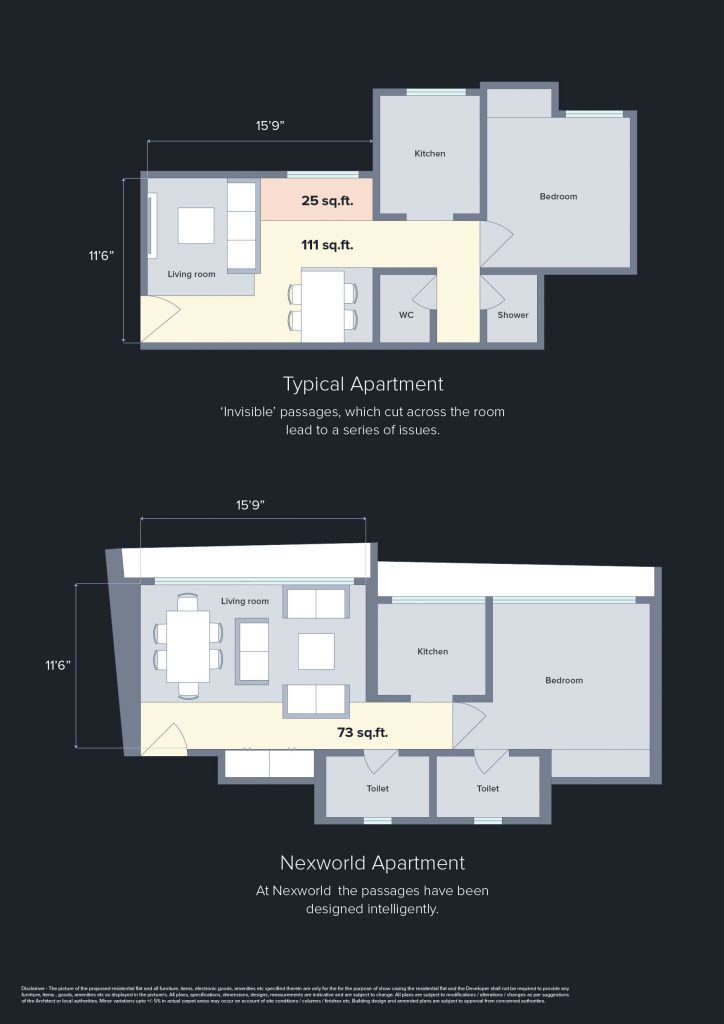
– Is there space to add a desk and chair in the kids bedroom?
– Is there sufficient storage space?
– Is there enough space and counter space in the kitchen?
– Are the number of toilets sufficient?
Evaluate the trade-offs
– There are always trade-offs involved while buying a home, think about what’s more important to you.
– Do you need a larger living room or a larger bedroom?
– Do you need 1 toilet or 2 toilets?
– Do you need a puja room or would you prefer a larger bedroom?
Compare costs using the right metrics
1. Even though this might seem straightforward, different developers have different cost sheet formats, and this can lead to comparisons that are not accurate
2. Use a simple but powerful metric. The easiest way to compare is by checking the all inclusive rate per useable square feet.
Rate = All inclusive cost/Useable area
3. As noted earlier, the useable area might differ from RERA area but is a better measure.
4. Also be careful while looking at all-inclusive cost, make sure it’s an apple to apple comparison – some developers choose to include charges like corpus fund or maintenance in the cost while the others only mention it in the fine print. Similarly make sure all taxes are included in the cost.
5. However as mentioned earlier, the rate per square foot is just one consideration, do not make that the deciding factor or you might end up regretting buying a home that’s not a good fit to save a small amount.
Factor in EMI holidays, subventions and add-ons
Some developers offer no pre-EMI till possession, or a waiver of EMI’s for a given period or might throw in free white goods or add-ons like furniture. As a customer always assume that there are no freebies. While offering such deals, the developer definitely factors the added cost into the pricing. So always verify the cost of the add-on independently and see if it makes sense for you. For example, in a subvention scheme, calculate the pre-EMI you would have paid under a normal scheme and check if the benefit exceeds the difference between construction linked and subvention pricing. If white goods are being offered, check the market value of the goods and see it is value for me. In most cases, you will be able to opt for a discount instead of such freebies. Again – think about your requirement – if for example you’re staying on rent and want to avoid paying pre-EMI, it might be worth paying a small premium to opt for a subvention scheme.
Other considerations
1. Understand the payment schedule thoroughly and make sure that you understand the tentative schedule of payments so that you can plan your cash flows.
2. Read the fine print and ask the sales team about the clauses for delay, cancellation and refund
Be wary of flashy and pushy sales presentations
1. A good sales presentation is an encouraging sign, especially if the salesperson seems genuine, presents facts, and listens and responds to your requirement. However, while flashy experience centres or a pitch that has more style than substance can be exciting, don’t just base your decision on that. Don’t get wowed by the experience and forget to ask the right questions. Some developers show hugely ambitious plans that may take decades to achieve or may never even be built – only look at what the developer has registered as a commitment in RERA.
2. It’s also a common tactic to have large crowds and public celebrations of other customers booking while you’re at the sales office to tempt you into making a decision on the spot – salespersons will also push you to make a spot decision by offering discounts which they claim will not be available later. Always consider the decision carefully and discuss with your family – a home should not be an impulse buy.
By following these simple tips, you can make sure that you buy a home that’s a good fit for you and your family without burning a hole in your pocket. You can also check out our Faqs for home buyers for more details.


